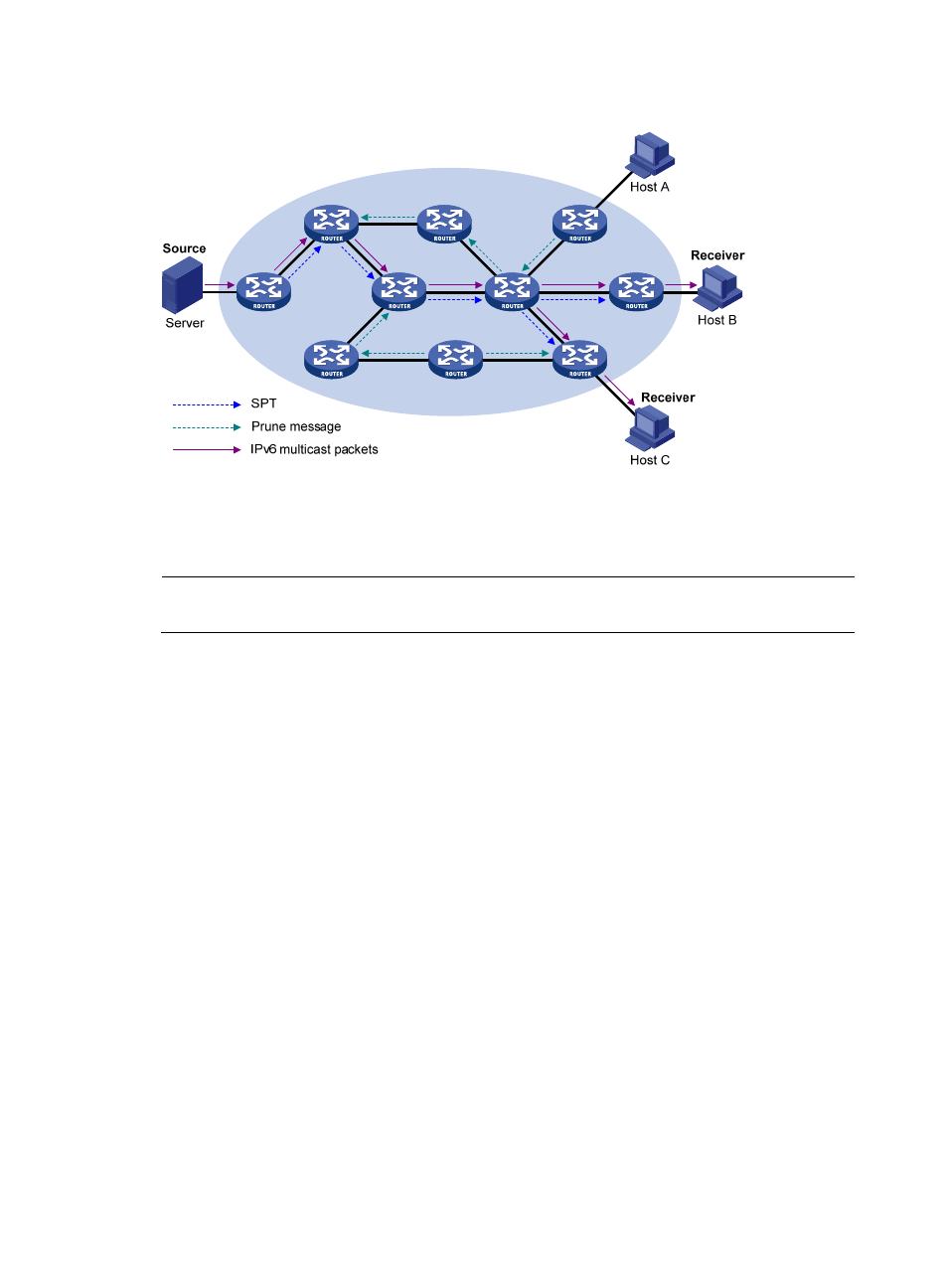Graft, Assert – H3C Technologies H3C S10500 Series Switches User Manual
Page 372

357
Figure 92 SPT establishment in an IPv6 PIM-DM domain
The flood-and-prune process takes place periodically. A pruned state timeout mechanism is provided. A
pruned branch restarts multicast forwarding when the pruned state times out and then is pruned again
when it no longer has any multicast receiver.
NOTE:
Pruning has a similar implementation in IPv6 PIM-SM.
Graft
When a host attached to a pruned node joins an IPv6 multicast group, to reduce the join latency, IPv6
PIM-DM uses the graft mechanism to resume IPv6 multicast data forwarding to that branch. The process
is as follows:
1.
The node that needs to receive IPv6 multicast data sends a graft message toward its upstream node
as a request to join the SPT again.
2.
After receiving this graft message, the upstream node puts the interface on which the graft was
received into the forwarding state and responds with a graft-ack message to the graft sender.
3.
If the node that sent a graft message does not receive a graft-ack message from its upstream node,
it keeps sending graft messages at a configurable interval until it receives an acknowledgment
from its upstream node.
Assert
Where more than one multicast routers exists, the assert mechanism shuts off duplicate IPv6 multicast
flows onto the same multi-access network. It does this by electing a unique IPv6 multicast forwarder on
the multi-access network.